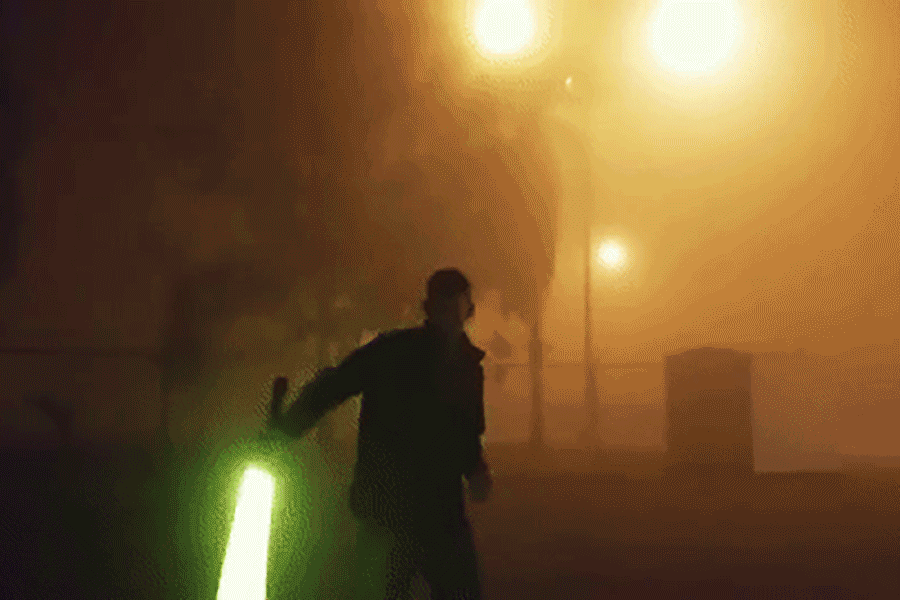Maxwell Darwin Perkins was a 20-year-old Cal State-Chico student when he decided to pick up meditation. He was frequently drinking to excess, and after some introspection, he realized he needed to make a change. “I didn’t feel like I was becoming the person I was supposed to be,” Perkins remembers.
He began studying various religions, especially as they pertain to numerology, until he discovered the Eastern philosophy tenet of mindfulness — the act of being present in, and aware of, one’s own body and thoughts. “It was like a switch flipped in my mind, away from self-destruction and toward self-improvement.”
Perkins took to practicing yoga and seated, silent meditation. Nowadays, however, he hardly does either. His primary mindfulness practice involves twirling toy lightsabers—the weapon of choice of Star Wars heroes. “As soon as I pick up my lightsaber, my mind enters this alternate space,” Perkins says — one of elevated consciousness and greater sense of connectedness with the world.
Perkins is just one of the many Star Wars faithful for whom the iconic sci-fi movie franchise is more than just entertainment — it’s a means for achieving spiritual enlightenment in the real world. Reddit communities devoted to meditation are full of posts pointing out the mindfulness lessons to be found in Star Wars. Bloggers point to the mindfulness practices of the Jedi as a means of managing anxiety. And there’s even an entire book about the subject, titled The Dharma of Star Wars.
The parallels between the Star Wars franchise and the teachings of Buddhism, Taoism and other Eastern philosophies are myriad and intentional. One of George Lucas’s primary inspirations when creating the Star Wars universe was Joseph Campbell and his seminal work The Hero With a Thousand Faces, a book that examines the similarities between the mythological traditions from cultures around the world. Lucas seized on some of the Eastern storytelling traditions, such as Buddha’s path to enlightenment, and incorporated them into his space epic.
Central to the Star Wars movies is The Force — a metaphysical energy that binds all living things. It can be harnessed for good (The Light Side) or evil (The Dark Side), but the ultimate goal is to keep those two in balance. The idea of an all-pervasive binding Force is akin to the Taoist principle of Chi, and achieving harmony between its positive and negative elements is symbolized by the yin-yang and also found in Buddhism.
It’s no coincidence the Jedi—the righteous, religious warriors tasked with keeping the Dark Side in check—use mindfulness to do so. For example, midway through his climactic lightsaber battle with Darth Maul in The Phantom Menace, Qui-Gon Jinn, a Jedi, takes advantage of a break in the action to sneak in a quick meditation session. Luke Skywalker strikes a levitating lotus pose in the latest film, The Last Jedi. And doesn’t Luke’s mentor, Yoda, remind you of Buddha? His upside-down syntax certainly reminds one of a Buddhist koan.
Thirty-year-old Thorbjørn from Denmark started noticing these parallels himself as a teenager, when he watched the Star Wars prequels. He’d loved the original Star Wars trilogy as a kid, but the prequels dealt more directly with The Force, and the humility and mindfulness needed to tap into its power.
“When Qui-Gon decides whether or not to take on Anakin, he decides it with a dice game,” Thorbjørn says. “That’s a way of leaving something up to the gods, or in this case, the Force. But instead, Qui-Gon uses the Force to cheat at the game. He’s no longer following the right way, and that leads to the downfall of Anakin. In a way, that’s what the prequels are about — humility. The Jedi grow arrogant and stop listening, which sends them down a dark path. They’re so sure of their being right they don’t even see the enemy in their midst.”
That lesson, and others from the Star Wars films, would go on to influence Thorbjørn’s own mindfulness practice years when he started it a decade go.
Similarly, when Ryan Parks was developing Kung Flow, his signature brand of exercise-based meditation, he decided to frame it as a Jedi training course to make it more accessible to people who are uninterested in religion.
Perkins is one of Parks’ devotees, and he says the Jedi give him a “context” for what to aspire to in his quest for enlightenment. That realization came on August 21, 2017, when Perkins first wielded one of his toy lightsabers. Perkins was in Big Summit Prairie, Oregon to watch the eclipse, and when the eclipse viewing ended, his friend handed him a lightsaber. “It was like the moment King Arthur held Excalibur. Something unlocked in my mind, and I thought, Oh my God, I’m a Jedi,” Perkins says.
Thorbjørn, meanwhile, aspires to be like Obi-Wan Kenobi in the prequels — rakish and happy-go-lucky, but a Zen master all the same. It is, for him, the perfect combination. Or as he puts it, “Star Wars is mindfulness made cool.”
